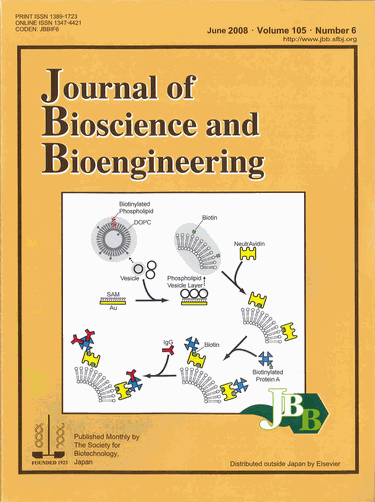Journal of Bioscience and Bioengineering Vol. 105, No. 6 (2008)
Vol. 105, June 2008
A biotin-containing phospholipid vesicle layer is used for surface resonance plasmon (SPR) biosensing.
When a suspension of vesicle composed of 1,2-dioleoyl-sn-glycero-3-phosphocholine (DOPC) and a biotinylated phospholipid is applied on a self-assembled monolayer (SAM) deposited on a gold-coated SPR sensor chip, the layer of the phospholipid vesicle (phospholipid vesicle layer) forms on the surface.
The vesicle layer can immobilize a biotinylated protein A through the biotin-avidin-biotin linkage. Furthermore, immunoglobulin G (IgG) can bind to the protein A immobilized on the vesicle layer. Because these reactions are designed to take place on the gold surface, the protein immobilization based on the biotin-containing phospholipid vesicle layer is a useful technique for SPR biosensing.
Related article: Ishizuka-Katsura, Y., Wazawa, T., Ban, T., Morigaki, K., and Aoyama, S. J., “Biotin-containing phospholipid vesicle layer formed on self-assembled monolayer of a saccharide-terminated alkyl disulfide for surface plasmon resonance biosensing”, J. Biosci. Bioeng., vol. 105, 527-535 (2008).
⇒JBBアーカイブ:Vol.107 (2009) ~最新号
⇒JBBアーカイブ:Vol. 93(2002)~Vol. 106(2008)



.gif)